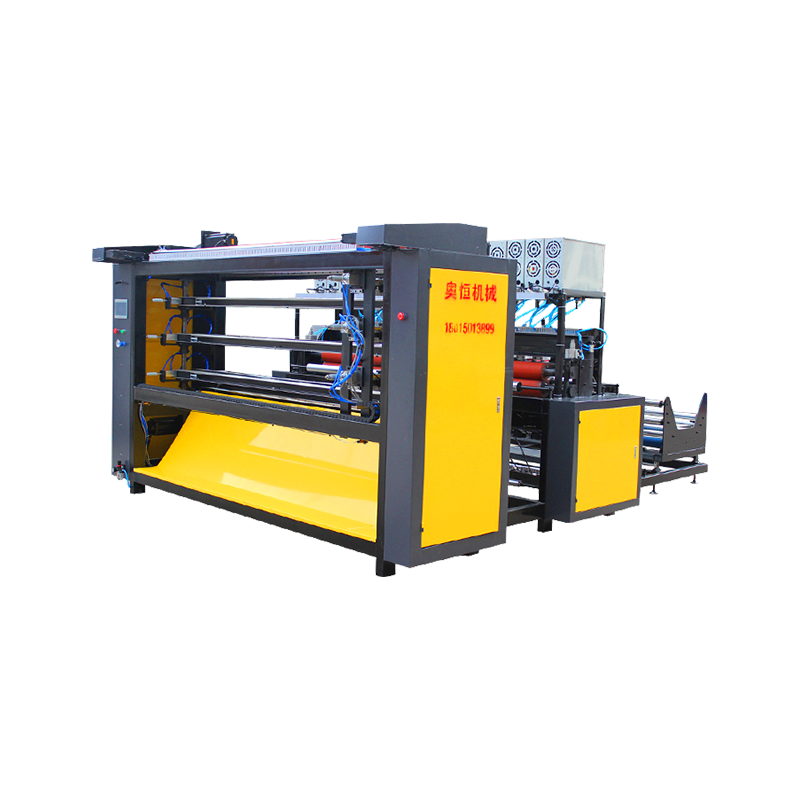Request A Quote

As the global demand for non woven fabric products continues to rise across industries—from medical masks and hygiene products to agriculture, packaging, and geotextiles—manufacturers are under pressure to improve production efficiency and precision. One of the key components in the production process is the non woven fabric cutting machine. Choosing the right machine for your production line is critical for ensuring quality, maintaining throughput, and controlling costs.
This comprehensive guide is designed to help you make an informed decision when buying a non woven fabric cutting machine. Whether you're a startup factory or an established manufacturer looking to upgrade, we’ll walk through the essential factors, types, features, and selection tips to guide your purchase.

Content
A non woven fabric cutting machine is specialized equipment used to cut non woven materials into specific shapes or dimensions. These machines are designed to work with a wide range of non woven fabrics, which are made from bonded fibers without weaving or knitting.
Depending on the application, these machines may perform single-layer or multi-layer cutting, manual or automatic feeding, slitting, perforating, or die cutting. The cutting accuracy and speed significantly influence the quality of the final product and the efficiency of the production line.
Understanding the applications of these machines can help you determine which features are most relevant to your needs:
Medical & Hygiene Products: Face masks, surgical gowns, diapers, sanitary pads
Agriculture: Crop covers, seedling protection mats, weed control fabrics
Packaging: Recyclable bags, protective wrappings
Automotive: Insulation materials, interior linings
Home Furnishings: Mattress covers, upholstery linings
Industrial Use: Filters, cable insulation wraps
There are several types of cutting machines used in processing non woven fabrics. Each type has its own advantages depending on the scale and precision requirements of the production.
Best suited for low-volume operations or custom fabric shapes.
Low cost and minimal maintenance.
Labor-intensive and not suitable for high-throughput environments.
Use cylindrical dies for continuous, high-speed cutting.
Suitable for complex shapes and high-volume production.
Ideal for hygiene products and packaging.
Utilize flat dies for versatile, high-accuracy cutting.
Work well for multi-layer materials.
Often used in medical and automotive industries.
Use a focused laser beam for non-contact cutting.
Deliver extremely precise cuts and support intricate designs.
Suitable for delicate or heat-sensitive materials.
Higher cost but superior flexibility and no need for physical dies.
Use high-frequency vibrations for frictionless cutting.
Often combined with sealing functions in hygiene product lines.
Ideal for clean edges and minimal fabric distortion.
Designed to cut wide rolls into narrower strips.
Often used in packaging, medical, or filtration product production.
Making the right choice involves balancing your specific needs, budget, and long-term goals. Below are the key aspects to evaluate:
Different machines are suited for spunbond, meltblown, needle-punched, or composite non woven fabrics.
Thicker or multi-layered materials may require high-tonnage die cutting or laser options.
For medical or consumer goods, edge quality and dimensional accuracy are critical.
Consider CNC or laser-based systems if tolerances are tight.
High-speed rotary or automatic flatbed cutters are better suited for mass production.
Manual or semi-automatic options are better for low-volume or prototyping needs.
Automatic feeding, stacking, roll unwinding, and waste collection can improve productivity.
Computerized control systems allow for pattern memory, nesting optimization, and remote diagnostics.
Make sure the machine can handle the maximum fabric width you intend to process.
Consider the future scalability of your production needs.
Energy efficiency is a key concern for large-scale operations.
Compare power ratings and cooling requirements.
Look for machines with a simple design, modular components, and good manufacturer support.
Easy availability of consumables and spare parts minimizes downtime.
Touchscreen HMIs and multilingual support improve usability.
Adequate training resources from the manufacturer can ease the onboarding process.
The cost of a non woven fabric cutting machine can range widely depending on its type, capabilities, and brand. Here's a rough breakdown:
| Machine Type | Typical Price Range (USD) |
| Manual Cutting Machines | $500 – $2,000 |
| Slitting Machines | $3,000 – $10,000 |
| Rotary Die Cutting Machines | $10,000 – $80,000+ |
| Flatbed Die Cutting | $15,000 – $100,000+ |
| Laser Cutting Machines | $30,000 – $150,000+ |
| Ultrasonic Cutting Machines | $5,000 – $50,000+ |
Keep in mind that the initial cost should be weighed against long-term benefits such as efficiency, quality improvement, and labor reduction.
When selecting a supplier, consider reputation, service network, and customization support. Some well-regarded brands in the market include:
Eastman (USA) – Known for automated cutting solutions.
Gerber Technology – Offers software-integrated cutting systems.
Golden Laser (China) – Specializes in non-contact laser systems.
KM (Japan) – Manual and semi-auto cutting tools.
KURIS (Germany) – Flatbed and roll cutting equipment.
Many Chinese manufacturers also offer competitively priced models with customizable features for niche applications.
Request Samples: Ask for a sample cut on your actual non woven fabric.
Inspect the Machine In Person: If possible, visit the showroom or factory.
Look for Certifications: CE, ISO, and local safety compliance are important.
Evaluate After-Sales Service: Check warranty terms, response time, and local support availability.
Plan for Growth: Buy a machine that can accommodate your expected production scale in the next 3–5 years.
Selecting the right non woven fabric cutting machine requires a deep understanding of your production requirements, materials, and business goals. With options ranging from simple manual cutters to advanced laser and ultrasonic systems, there’s a machine tailored for every budget and application.
A thoughtful investment in the right cutting equipment not only enhances product quality but also boosts operational efficiency and scalability. As non woven fabric continues to play a critical role across industries, the importance of reliable and precise cutting machinery becomes even more significant.
Whether you're producing face masks, agricultural fabrics, or automotive interiors, this buyer’s guide should help you navigate the options and make a decision that supports your long-term success.
Copyright © ChangZhou AoHeng Machinery Co., Ltd. All Rights Reserved

 English
English 中文简体
中文简体 русский
русский Español
Español